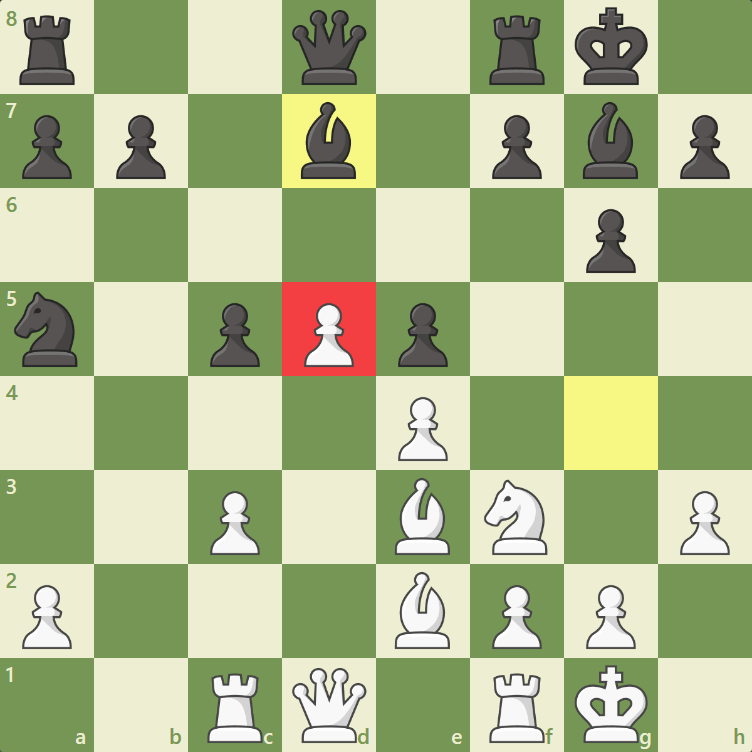
Passed Pawn
There are many different types of pawns. A passed pawn is one that should be understood, supported (or stopped) and potentially feared!
Here is what you need to know about passed pawns:
The passed pawn has a soul, desires, and fears.
— J.H. Donner
What Is A Passed Pawn?
A passed pawn is a pawn that has advanced beyond all of the enemy pawns. In other words, a passed pawn has no enemy pawns in front of it or on adjacent files that can stop it from being promoted.
In the following position, we can see an example of a dangerous passed pawn. Please note that there are no pawns that can stop the white pawn on c5, as there aren't any black pawns on the b, c, or d-file.

A passed pawn is a criminal which should be kept under lock and key. Mild measures, such as police surveillance, are not sufficient.
— Aron Nimzowitsch
Types of Passed Pawns
There are a couple of types of passed pawns. A protected passed pawn is a passed pawn that is defended by another pawn. In the diagram below, we can see that White's passed pawn on d5 is protected by the pawn on e4. This is a protected passed pawn.

An outside passed pawn is a passed pawn that is on the edge of the board (usually on the a-file or h-file) that is separated from enemy pawns by a couple (or more) files. In the image below we can see an example of an outside passed pawn on a5. Because Black has no pawns close to the a5-pawn, it is an outside passed pawn.

Two passed pawns on the sixth beat everything, up to a royal flush.
— Ian Rogers
Why Are Passed Pawns Important?
Passed pawns are important because they can be promoted to another piece. If a white pawn reaches the eighth rank or if a black pawn reaches the first rank, then that pawn can be promoted to a knight, bishop, rook or queen (it is up to the player who is promoting the pawn to choose).
In the endgame, passed pawns are especially dangerous because there are fewer pieces that can try to stop them. In the following diagram, we can see a passed pawn that cannot be stopped from promoting.

Passed pawns must be pushed.
— Unknown.
Passed pawns are also important because they are usually in enemy territory where they can control potentially important squares in the opponent's camp. In the following diagram, the protected passed pawn on d5 cannot be promoted anytime soon, but it controls the important squares of e6 and c6.

Test
Now that you know what passed pawns are and why they are important, let's see if you can recognize a passed pawn. In the following diagram, is White's d5-pawn a passed pawn?

No! White's d5-pawn is not a passed pawn because Black has a pawn on d6 that is directly in front of it. Let's try another one! In the following diagram, is Black's b4-pawn a passed pawn?

Yes! Black's b4-pawn is a passed pawn! Bonus points if you recognized this as a protected passed pawn.
Conclusion
You now know what passed pawns are, why passed pawns are important, and how to recognize them. Enjoy your new knowledge about passed pawns, and may your passed pawns all be promoted!







